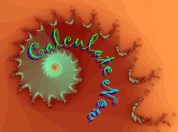
|
Enquiries: contactATarmidaleDOTinfo
Pressure Conversions Converter
In layman's terms pressure is the amount of push divided by the area being pushed. Because there are many units for measuring both push and area there are a large number of potential pressure units. Also there are times when we measure the effect of pressure rather than the pressure itself - such as the height a column of mercury rises in a barometer - so the impression can be created that pressure is a length!!
The SI (metric) standard method is Pascals, which is equivalent to one Newton of force per metre squared. A Newton is a push that would cause a kilogram mass to increase it's speed by one metre per second, for every second that the push lasts.
When measuring and adding pressure one needs to be aware of the difference between gauge pressure and actual pressure. Gauge pressure is the difference between the pressure being measured and the pressure exerted by the atmosphere (atmospheric pressure). A tyre pressure gauge measures the difference between atmospheric pressure and the pressure exerted by air inside a tyre. This is called gauge pressure because it is the pressure you read off the gauge. To calculate the actual pressure you add the atmospheric pressure. Normally you would measure atmospheric pressure with a barometer.
The converter below adds pressures measured in different units and converts the answer to a range of different pressure units. Here are some suggestions of the types of problems it can solve:
-
Convert your type pressure measured in PSI into the SI standard unit
-
Convert a gauge pressure to actual pressure (HINT: add 1 atmosphere to your measurement by putting a one in the atmospheres box)
-
If you could arrange a giant barometer using the sea as the reservoir instead of a bowl of mercury, how high would the atmosphere push a column of sea water? (HINT: - convert 1 atmosphere to cmWC)
NOTE: In popular usage the unit Pounds-force per Square Inch is often abbreviated to Pounds per Square Inch.
Pressure Converter